Fuel from Marathon station leaks into Bloomington’s sewers, officials work to get plant back online
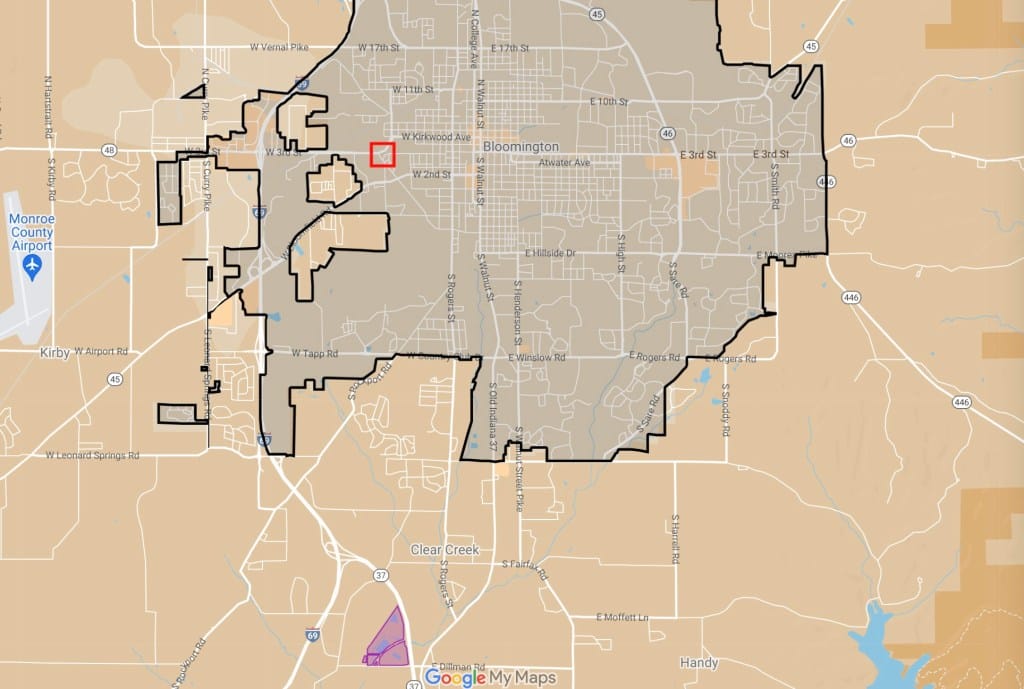
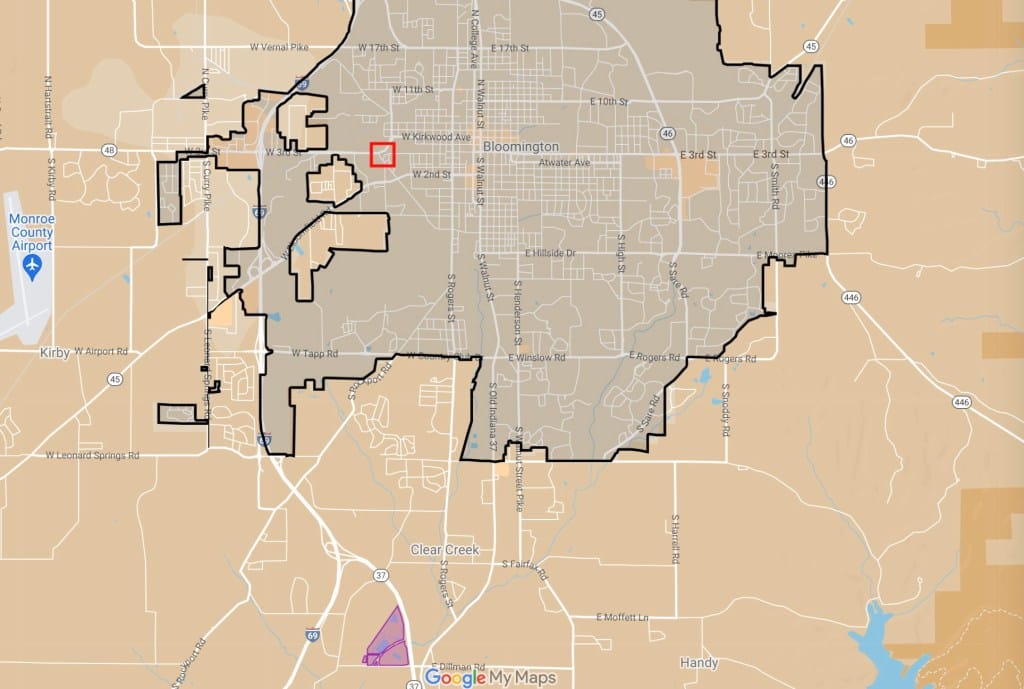


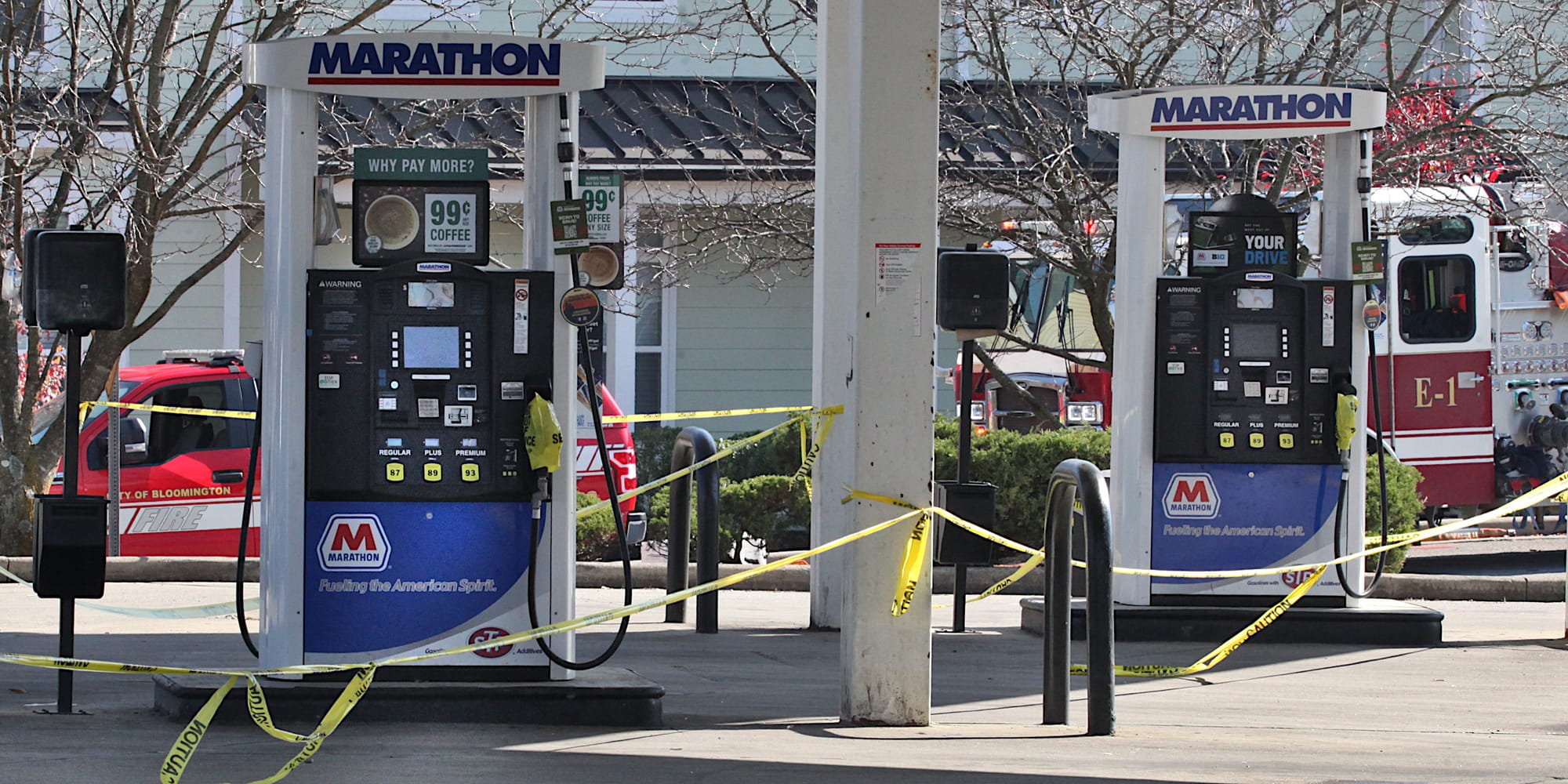
If Bloomington residents smell gasoline inside their homes, they should ventilate the area by opening windows and avoid an open flame.
That’s the advice in a news release from the city of Bloomington issued in the early morning hours of Tuesday. According to the news release residents who have concerns can call (812) 269-6052.
Prompting the advice was a gasoline leak from the Marathon gas station at the southeast corner of 3rd Street and Patterson Drive.
Because the gasoline apparently made its way into the sanitary sewer system, the news release considered the possibility that gasoline fumes might intrude into people’s homes.
According to the news release, there is “currently no risk to residents and no cause for alarm.”
[Updated at 5:14 p.m. on Nov. 1, 2022: The Dillman Road wastewater treatment plant has been back online for a while now.]
The fuel has been removed from the storage tanks at the station, according to the news release. Cleanup efforts have started, but it’s not known how long that will take, according to the news release. The news release doesn’t say how much gasoline is believed to have leaked out.
At the Marathon station in the early afternoon hours of Tuesday, The B Square saw several plastic jugs of Buckeye AFFF (aqueous film forming foam), which is a foam used for fighting high-hazard flammable liquid fires.
A company truck from Environmental Restoration was on the scene with a hose deployed into a manhole on 3rd Street, which was closed off where it runs south of Rose Hill Cemetery.
Sampling by Bloomington fire department and the Indiana Department of Environmental Management (IDEM) indicate fuel vapor levels are dropping, the news release says.
The possibility that there could be gasoline in the city’s sewer system was identified on Sunday by operators at the city’s Dillman Road wastewater treatment facility, who smelled a gasoline-like odor, according to the city of Bloomington. The Dillman Road facility is located outside of the city limits, about six miles south of the Marathon Station.
According to a city of Bloomington news release, on Sunday the Dillman Road plant operations were shut down temporarily and the sewage was diverted to the plant’s equalization basin. A question The B Square has submitted to city officials: How many day’s worth of sewage can be stored in the equalization basin? [Updated at 5:14 p.m. on Nov. 1, 2022: According to director of utilities Vic Kelson, this is not a concern because the plant is back online.]
The source of the odor smelled by Dillman Road plan operators was eventually traced by the city to the Marathon Station at 1307 W. 3rd Street.
According to the city’s news release, CBU will work with IDEM to take the steps required to resume Dillman Road plant operations.
As of early afternoon on Tuesday, the gasoline pumps at the Marathon station were cordoned off with yellow caution tape. Present on the scene were representatives from Bloomington fire department, city of Bloomington utilities, Monroe County emergency management, and Indiana Department of Environmental Management (IDEM).
Bloomington fire chief Jason Moore was reportedly on the scene all night Monday, and did not leave until around 7 a.m. Tuesday.
[Added at 5:50 p.m. on Nov. 1, 2022: According to CBU director Vic Kelson, by Monday, gasoline vapor levels in the water flowing into the Dillman plan had gone down. So in consultation with IDEM, CBU started slowly bringing flow from the sewer into the plant.
Kelson wrote, “We have had no upsets, and we are now treating all the incoming water from the sewer without issues.”
The gasoline in the wastewater that was diverted to the equalization basin should naturally evaporate, according to Kelson. He wrote that CBU is sampling the water coming in, the water going out, and the equalization water. When the water in the equalization basin is comparable to the water coming in, CBU will start treating the water from the equalization basin.
Kelson wrote that the Dillman plant did not receive a “big slug of gasoline”—any gasoline that entered the sanitary sewer came through leaks in the sewer. Kelson wrote that the Dillman plant probably received only a small fraction of the spilled gasoline.
Kelson wrote that the spill was discovered by a CBU employee who was inspecting sewer manholes for gas fumes in the Dillman sewer basin. To do that CBU workers use a gas sensor (a ‘sniffer’) that detects hydrocarbon vapors.” But Kelson wrote the employee smelled it before the sensor, because it was pretty obvious.]
[Added at 12:09 p.m. on Nov. 2, 2022: According to Bloomington fire chief Jason Moore, the fire department’s role on the scene is now wrapped up, as all measurements of fumes are under the required levels. It’s now up to IDEM and the Marathon station to sort out the rest of the cleanup.]
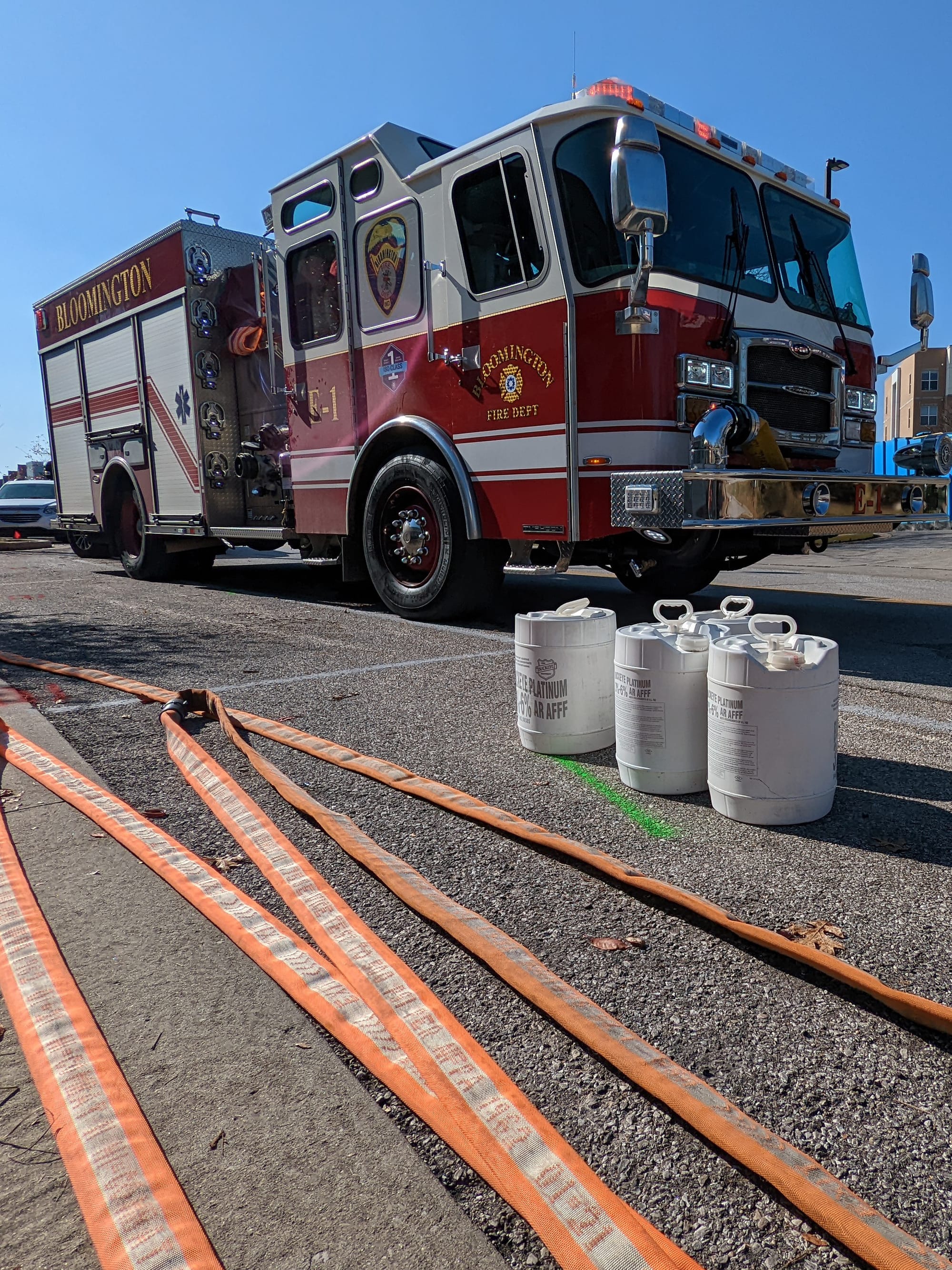
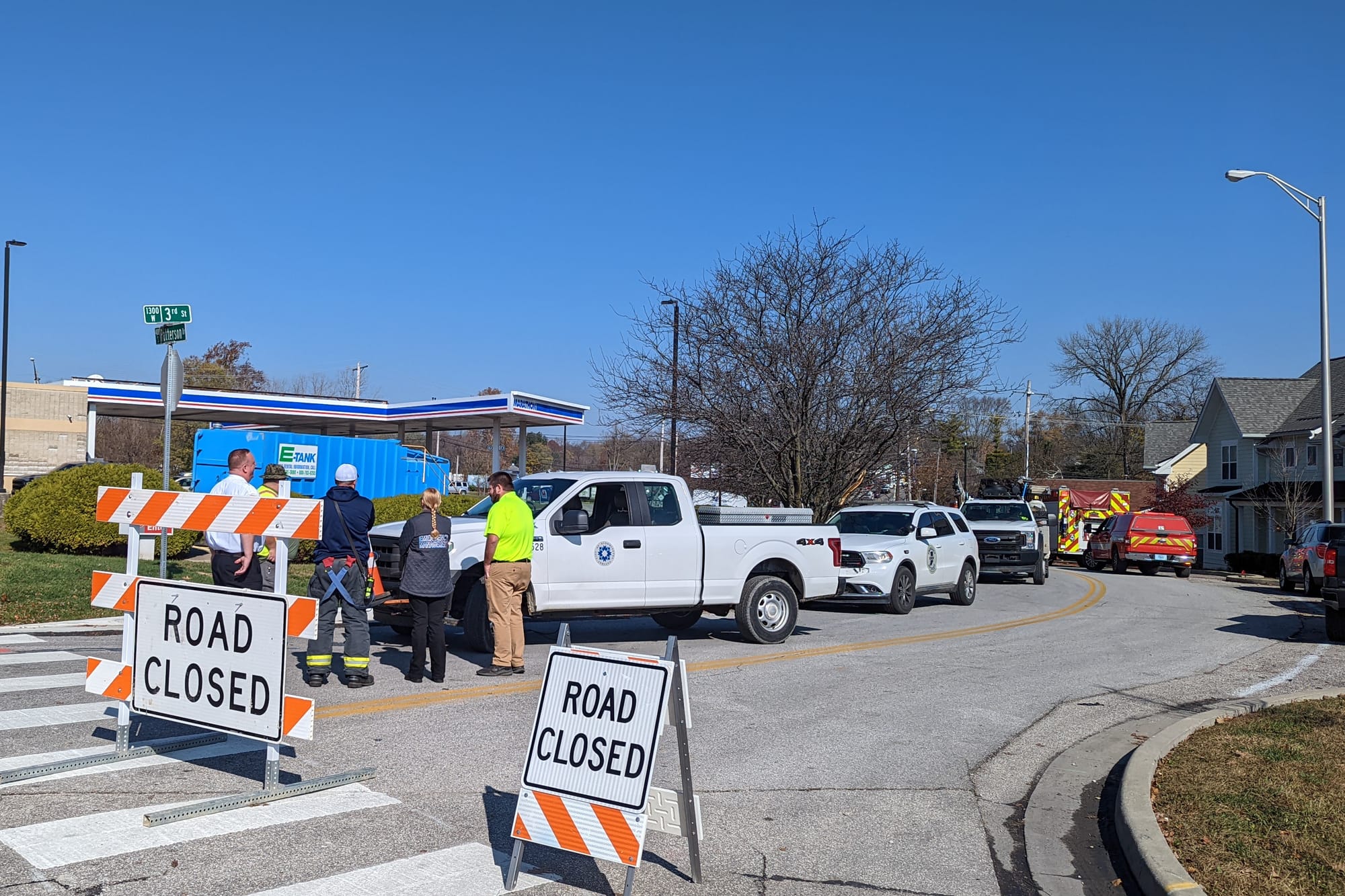
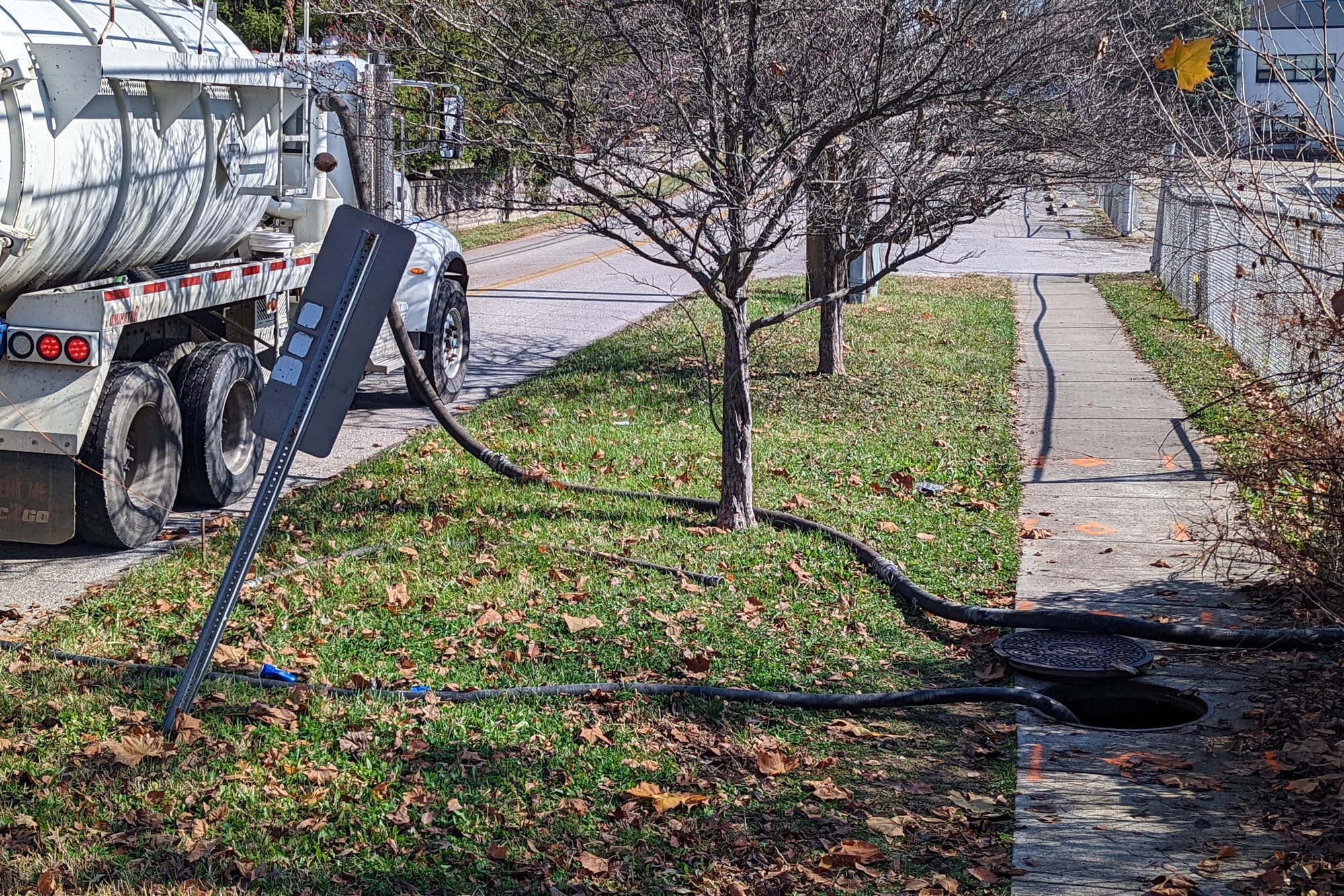




Comments ()